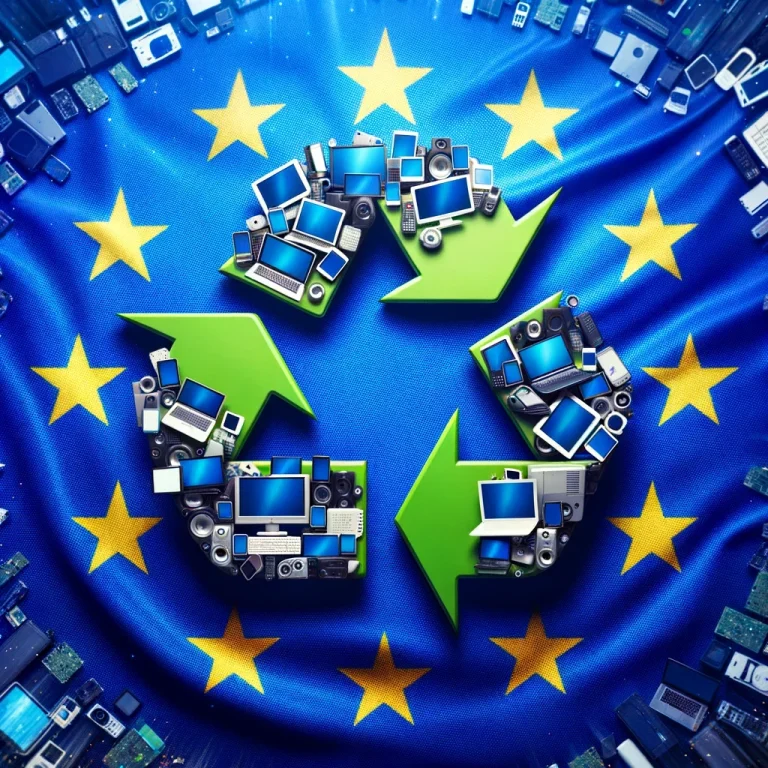Sprache: DE
What does EU Directive 2012/19/EU on Waste Electrical and Electronic Equipment (WEEE) regulate?
The EU Directive 2012/19/EU, commonly known as the WEEE Directive (Waste Electrical and Electronic Equipment), is a set of regulations focused on the collection, recycling, and proper disposal of Waste Electrical and Electronic Equipment (WEEE). This directive is a central element of the EU strategy from the Green Deal, but each member state can create its own legal regulations from it.

1. Objective and Scope
The WEEE Directive aims to minimize negative environmental impacts and health risks arising from improper disposal of WEEE. It sets standards for the collection, treatment, reuse, and recycling of WEEE and calls on member states to create corresponding legal and organizational frameworks. Member states must transpose the requirements of this directive into national law, but unlike a regulation, they have some leeway in implementing a directive. This results in various different national legislations regarding WEEE within the EU. The directive covers a wide range of products, from household appliances to IT equipment to medical devices.
2. Manufacturer Responsibility
The WEEE Directive embeds the principle of Extended Producer Responsibility (EPR) and obligates manufacturers of Electrical and Electronic Equipment (EEE) to actively participate in addressing the WEEE issue. This includes financing collection and recycling measures, providing information for treatment and recycling facilities, and supporting measures to prevent waste generation.
3. Collection Targets and Recycling Rates
The directive sets clear goals for the collection and recycling of WEEE. Member states are required to establish collection systems to ensure that a specific amount of WEEE is collected and properly treated. They are also obliged to achieve certain recycling and reuse rates to maximize the recovery of valuable materials and minimize landfill disposal.
4. Registration and Reporting
Manufacturers, importers, and exporters of WEEE must register in the respective target country of their distribution and regularly report on the quantities placed on the market, collected, reused, and recycled. This data is used to monitor and further develop the effectiveness of waste prevention and management measures.
5. Treatment Standards
The WEEE Directive also establishes standards for the treatment of WEEE. It stipulates that all collected WEEE must undergo proper treatment to enable the removal of hazardous substances and the recovery of materials.
6. Consumer Information
Manufacturers and retailers are required to inform consumers about their role and responsibility in connection with the disposal of WEEE. This includes information about where and how WEEE can be disposed of or recycled and why this is important.
7. Connection with the European Green Deal
The WEEE Directive is based in its purpose on the European Green Deal and other EU initiatives aimed at promoting the circular economy and minimizing the environmental impacts of production and consumption. By effectively implementing the WEEE Directive, member states contribute to achieving the goals of the Green Deal and supporting the transition to a more sustainable economy.
Wir benötigen Ihre Zustimmung zum Laden der Übersetzungen
Wir nutzen einen Drittanbieter-Service, um den Inhalt der Website zu übersetzen, der möglicherweise Daten über Ihre Aktivitäten sammelt. Bitte überprüfen Sie die Details in der Datenschutzerklärung und akzeptieren Sie den Dienst, um die Übersetzungen zu sehen.
